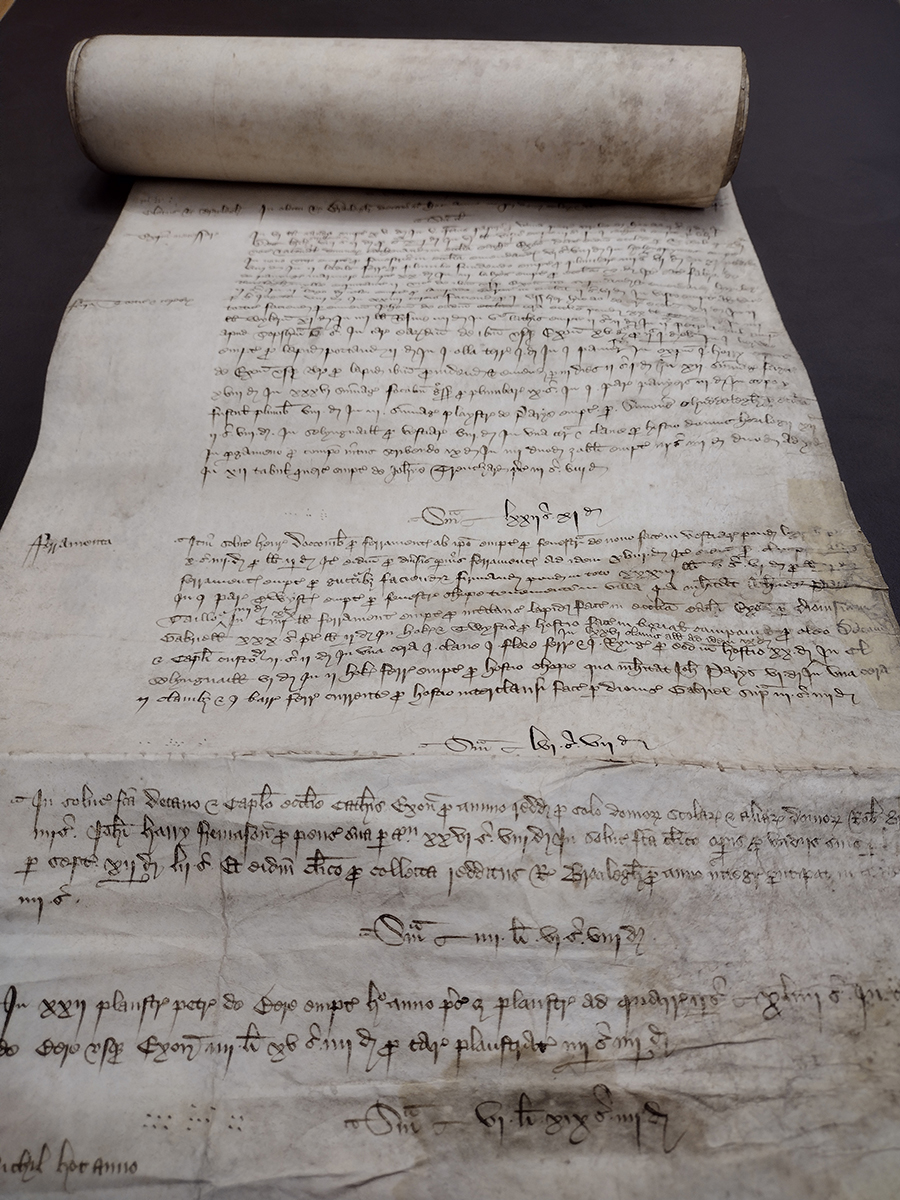 By Ellie Jones, Cathedral Archivist and Marie Jäcker, medieval historian at Kiel University, Germany
By Ellie Jones, Cathedral Archivist and Marie Jäcker, medieval historian at Kiel University, Germany
The accounts of Exeter Cathedral’s Fabric Fund are an incredible source of information about how the medieval cathedral building was constructed – how the work was funded, where the materials came from and how much they cost, and the workforce who carried out the work. More than a hundred parchment rolls survive from 1279 to 1520, making these one of the best preserved series of medieval building accounts anywhere in Europe. Most rolls cover a single financial year and begin with a record of the money received from collecting boxes, bequests, and rents, and then detail how the money was spent on wages and materials. It is hard to overstate the value of these documents in understanding how such a complex building was built, adapted, and maintained.
As well as helping to understand a major medieval construction project, the rolls also contain insights into administrative practices of the period. Marie Jäcker, a medieval historian from Kiel University, Germany – who has been studying some of the socioeconomic aspects of medieval cathedral building – explains one unusual medieval accounting technique. Be warned, it‘s a bit of a head-scratcher:
These accounts were made by the warden with responsibility for the maintenance and construction of the building. The warden divided up the income and expenses sections, giving a total at the end of each. Once the accounting year came to an end at Michaelmas (29 September), he presented his account to the auditors. During the auditing process all of the income and expenses sections that the warden had listed and summarised were recalculated and their total established again. During parts of the 15th century, to distinguish the amount the warden had calculated from the total established during the auditing process, the recalculation was given in so-called “dot-numerals”. They were popular among accountants during the later Middle Ages and can be found in various accounts, for example in York, Durham and in Exeter. They are all related to the abacus, a counting frame that was used as a calculation tool throughout medieval Europe.
The dot numerals represent sums of money. Dots are grouped together to represent pounds (first group), shillings (second group), and pence (third group). Each dot’s position within its group tells us the exact number of units. A dot on or below the line represents a unit of one. In the pounds and shillings columns, a dot above the line on the left counts for ten, but on the right it counts for five. In the pence column, a dot above the line counts for six.
Look closely at the bottom of the fabric roll shown above – from the accounting year 1433-1434 – can you see the dots?
There are six dots in the first group:
• Three dots on the line = 3
• Three dots below the line = 3
• Total = £6
There are six dots in the second group:
• Three dots on the line = 3
• One dot below the line = 1
• One dot above the line on the left = 10
• One dot above the line on the right = 5
• Total = 19 shillings
There are four dots in the third group:
• Two dots on the line = 2
• Two dots below the line = 2
• Total = 4 pence
So, the total reads £6, 19 shillings, 4 pence.
Once you understand what you are seeing it is a neat system!
This month’s In Focus event in the Cathedral will be taking a closer look at the fabric account rolls on Thursday 16th May, 11am-1pm.